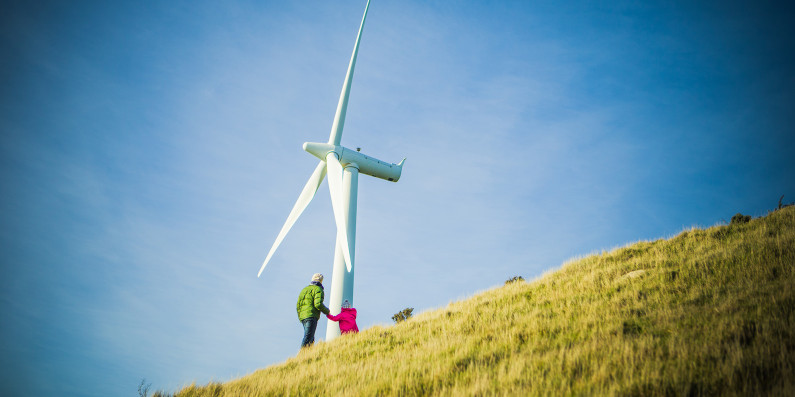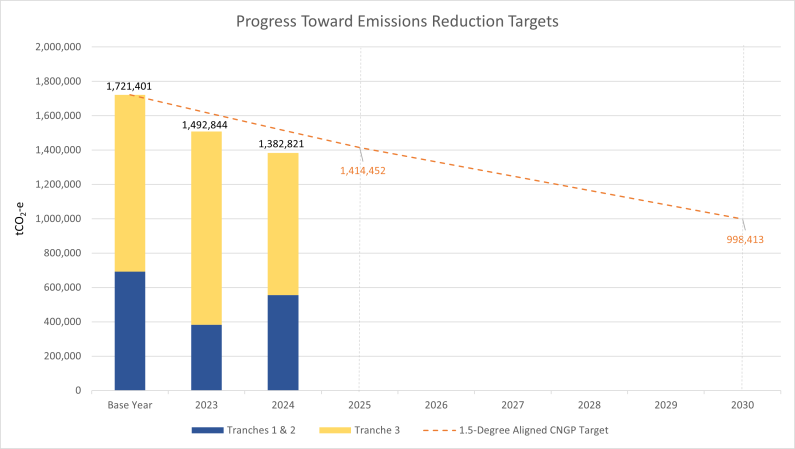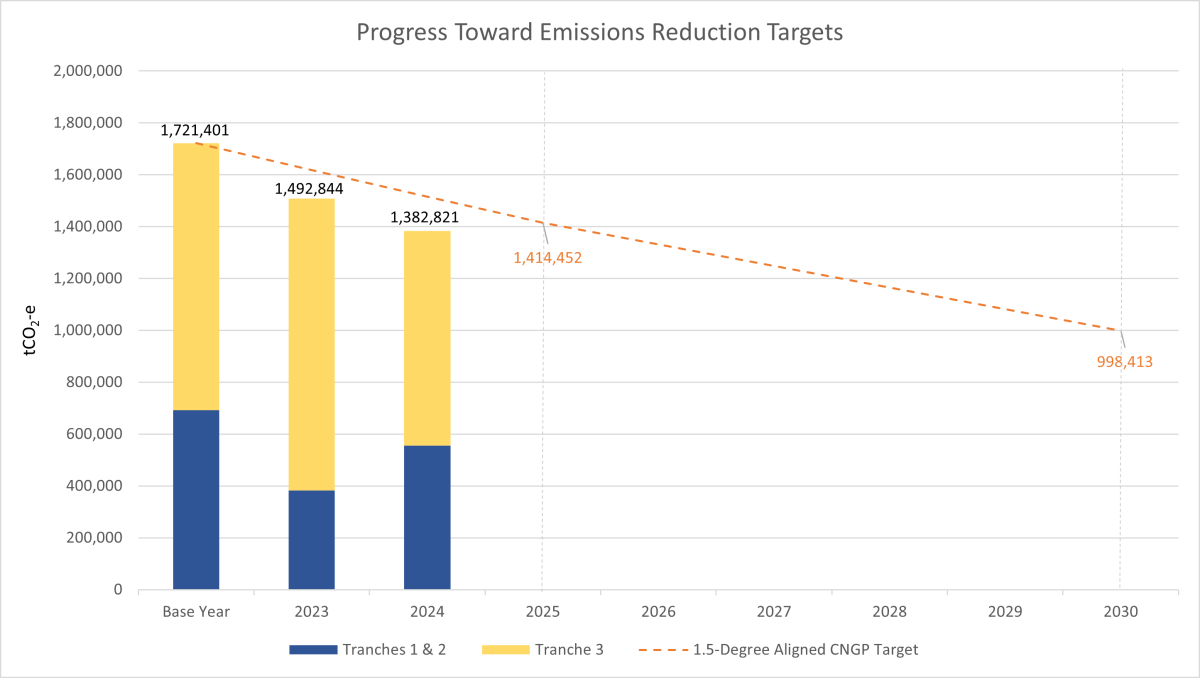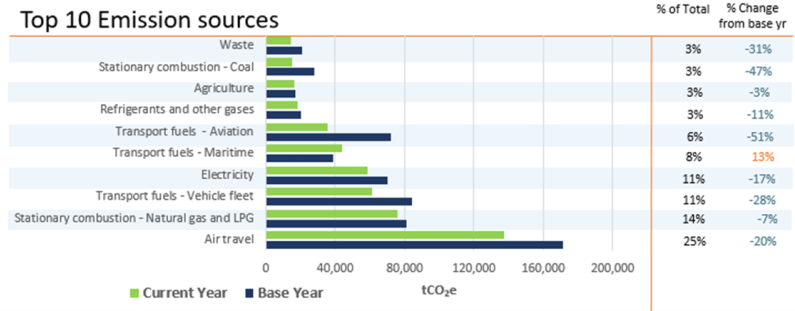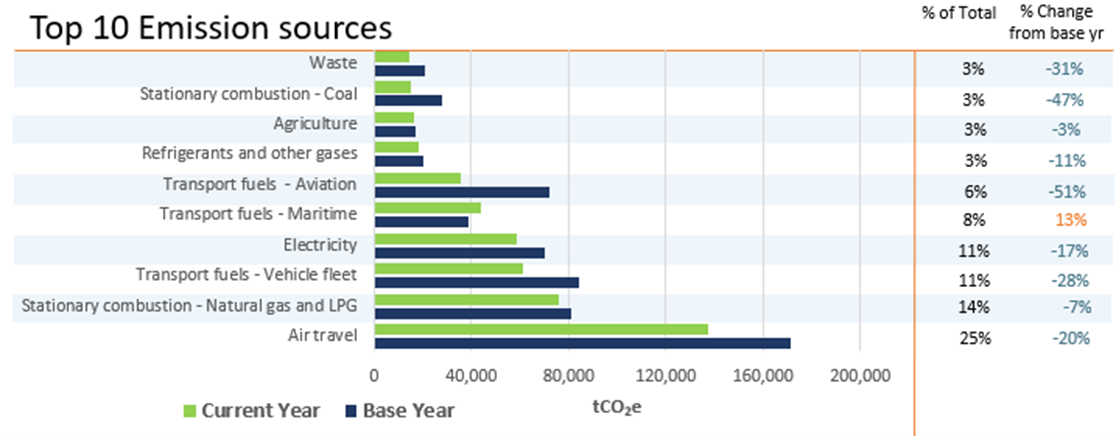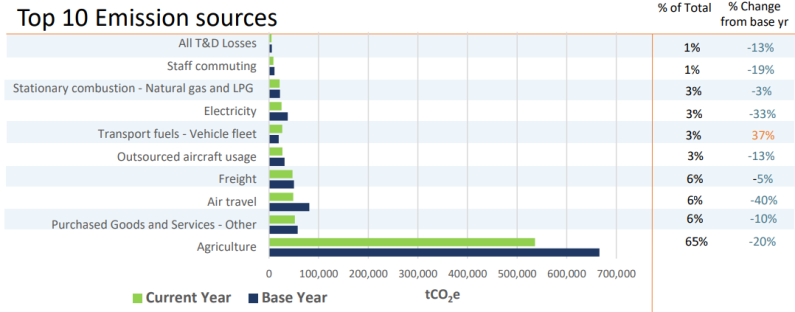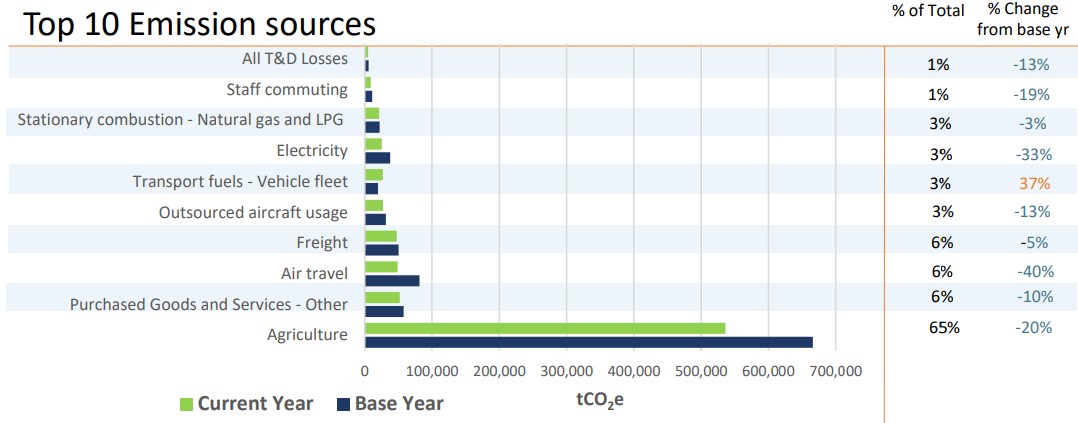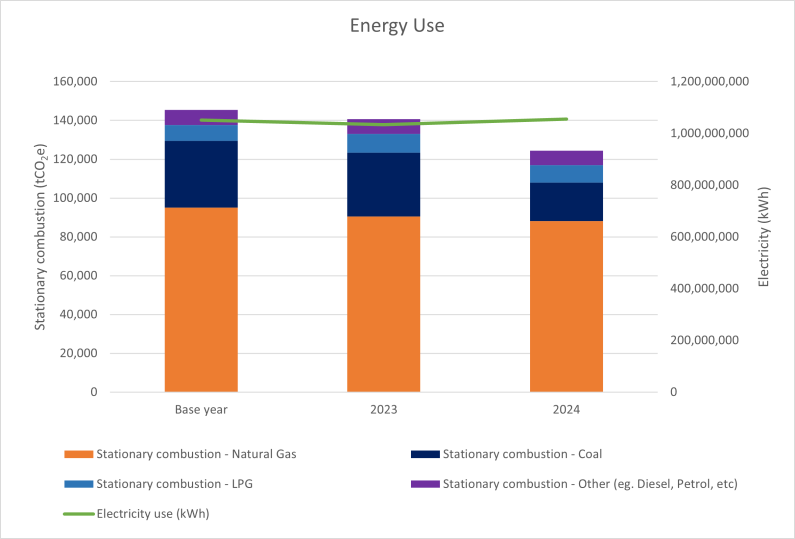Air travel
Air travel accounted for 13% of 2024 reported emissions across all tranches. This includes any travel on a commercial plane such as for overseas diplomacy, site visits, and community engagement and consultation (organisation-controlled aircraft, such as NZDF planes, are counted separately).
Air travel is still one of the highest emission sources for a majority of CNGP participants, and the largest emission source overall for Tranches 1 and 2 at 25% of total emissions. Across the programme, air travel emissions reduced 26% compared to base years in 2024. Although this is a smaller reduction than observed in 2023 when travel patterns were still impacted by Covid-19, it constitutes a significant reduction in air travel emissions across the public sector.
To date, 93% of participants have implemented measures to reduce air travel emissions and 63% of participants reported they plan to implement further measures this year (e.g. improved travel data and oversight, changes to travel policy, technology to support online meetings).
Fleet
Eleven percent of 2024 reported emissions across all tranches were from vehicle fleet. This includes light and heavy vehicles and covers all travel undertaken in CNGP participant-owned fleet vehicles. Twenty-five percent of vehicle emissions are from Police but many other organisations maintain significant vehicle fleets as part of their operations.
Fleet emissions reduced 15% from base years, in part due to the transition to electric vehicles.
See EV dashboard reducing government fleet emissions (New Zealand Government Procurement)
Coal boilers
Work is underway to phase out the largest and most active coal boilers. Eighteen projects are on track to be completed by end of 2025.
As of February 2024, 145 of 149 coal boilers in schools have been replaced.
Agriculture
Agriculture is the largest overall emission source at 40% of programme emissions. Ninety-seven percent of this is from the Tranche 3 organisation Landcorp/Pāmu, that manages nearly 360,000 ha of land around New Zealand. Agricultural emissions have dropped 19% since base year.
Supply Chain emissions
In addition to the mandatory programme emission sources, CNGP participants are encouraged to measure, report, and set appropriate targets for their Scope 3 value chain emissions. Alternative targets are permitted, reflecting the sometimes-limited influence organisations have over these sources. In 2024, 3,620,927 tCO2-e was reported under this category:
- Forty-eight percent of this was from Airways, from leased assets, investments, etc.
- Twenty-two percent of this was from the state schooling sector, predominantly from staff and student commuting, and purchased goods and services.
- Fifteen percent was from Kāinga Ora, from housing construction and associated activities.
This is an important part of the programme where emission reduction initiatives by government can influence the wider economy and support the provision of lower emission goods and services across a wide range of industries.
Energy and electricity
Six percent of 2024 reported emissions across all tranches were from electricity. This covers activities such as heating and lighting. Stationary combustion accounted for 9% of overall programme emissions with a decrease of 14.4% from respective base years.
CNGP organisations are leading by example in the energy transition, in line with the government’s Emissions Reduction Plan and net zero 2050 goals (Target 9). The energy landscape has dynamically shifted, with MBIE forecasting a faster and earlier decline in New Zealand's natural gas supply than previously predicted, putting pressure on gas prices and security of supply. The future replacement of gas systems with efficient electric technology will result in further operational savings and enhance organisational and national resilience to gas supply constraints. Further, investment in energy efficiency and energy transition reduces agency operational costs and we are seeing CNGP agencies investment in modern energy systems enabling some of these other benefits such as on-site operational resilience.
No material change in electricity consumption (kWh) has occurred since base year demonstrated by a 0.4% increase since respective base years. This reflects efficiency improvements given the displacement of fossil fuels. We expect to see electricity increase over coming years as electrification of buildings and fleets progress. Electricity emissions have reduced by 22% (11,778 tCO2-e) across the programme, largely reflecting reduced carbon intensity in the New Zealand electricity grid.
See further information on Reducing emissions in government office buildings (New Zealand Government Procurement)
